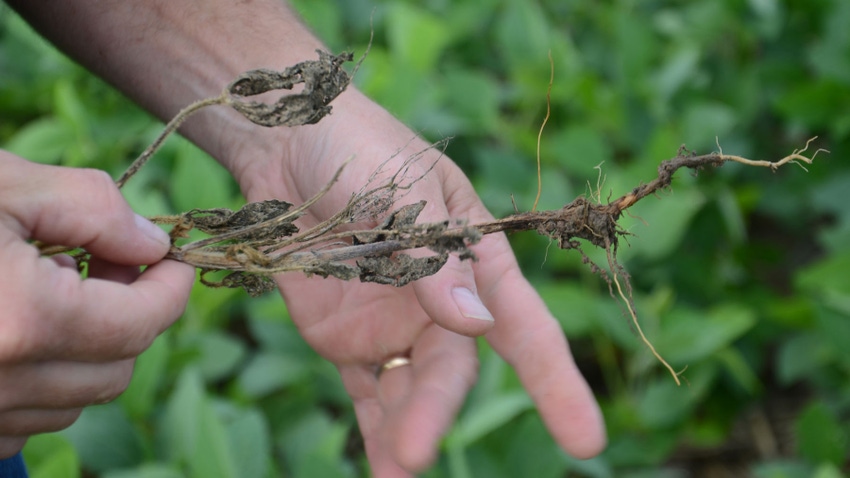
The Soybean Watch ’23 field is off and growing. Steve Gauck will be visiting it at key times during the season, monitoring growth and development. Gauck is a regional agronomy manager for Beck’s, based near Greensburg, Ind. Beck’s sponsors Soybean Watch ’23.
What things will Gauck be watching during July when he visits the field? Here are five questions he is often asked in July each year. He will answer these questions as he visits the Soybean Watch ’23 field over the next few weeks.
1. Should I spray fungicide on my soybeans? “Have you diagnosed diseases in your field?” Gauck asks. “If so, which ones? Will fungicides take care of them? The No. 1 reason to apply a fungicide is to combat disease. However, based on my experiences, I still generally recommend applying fungicide at R3, even if you haven’t seen symptoms of disease yet. We generally see yield benefit, even in absence of significant disease pressure.”
2. Should I add an insecticide to the mix when I spray fungicide? “Yes. It’s cheap insurance since insecticide is relatively lower cost compared to most other pesticides,” Gauck says. “That said, you don’t want to be spraying a pesticide for no reason due to resistance issues. Usually, there is enough insect pressure from various insects in the field to justify an application.
“The other consideration is timing. If you spray fungicide at R3, that may be early for some insects which tend to come in a bit later. If you find insects later, say at R5 or after, and pest levels reach the threshold, you may find yourself spraying again.”
3. Should I also take out volunteer corn? “While that may depend on how much volunteer corn is in the field, my tendency is to recommend taking it out,” Gauck says. “You will need a grass herbicide with clethodim as the active ingredient, since volunteer corn may have glyphosate and/or glyphosinate resistance built in. It’s a relatively cheap fix, and you remove competition for soybeans plus a nuisance that attracts insects.”
4. When is the best time to apply a fungicide in soybeans? Gauck prefers spraying at R3, if at all possible. The Purdue University Corn and Soybean Field Guide describes R3 as beginning pod stage. You can find one or more pods at least one-quarter inch long at one of the four uppermost nodes on the main stem, which has an unrolled, or flat, leaf.
Spraying fungicide too early can mean the active ingredient is gone by the time a later-season infection starts. Spraying too late gives disease a head start and risks some yield potential loss before pesticides have a chance to work.
5. Can you estimate soybean yield before harvest? “There are methods and formulas designed to do so, but it’s much more difficult than estimating corn yields,” Gauck says. “There are far more plants and pods to count, and there is often more variation in pod count per plant and bean size than when dealing with corn ears and kernels.”
The Purdue guide explains a yield estimate formula for soybeans if you would like to try it.
About the Author(s)
You May Also Like




